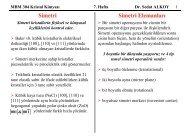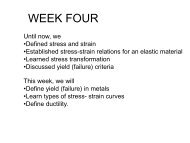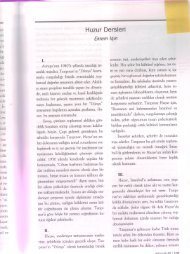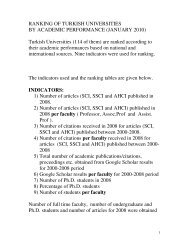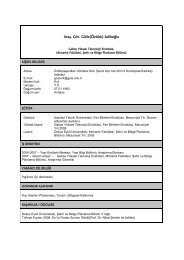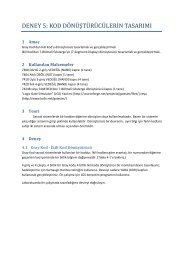How to Hire A-Players: Finding the Top People for ... - GIT home page
How to Hire A-Players: Finding the Top People for ... - GIT home page
How to Hire A-Players: Finding the Top People for ... - GIT home page
You also want an ePaper? Increase the reach of your titles
YUMPU automatically turns print PDFs into web optimized ePapers that Google loves.
Popping <strong>the</strong> Hood on Candidates Using Assessment Tools 183<br />
The wholesaler hired her and saw her excel as a sales rep, but only<br />
<strong>for</strong> a time. Ultimately, Janet was not driven enough by <strong>the</strong> financial<br />
rewards of <strong>the</strong> job <strong>to</strong> stay with <strong>the</strong> company. She ended up leaving<br />
<strong>to</strong> spend more time with her kids and <strong>to</strong> pursue o<strong>the</strong>r interests that<br />
paid less but that she found more rewarding.<br />
Avoiding an Organ Rejection: The<br />
Importance of Cultural Fit<br />
The <strong>to</strong>pic of cultural fit often comes up when I consult with companies.<br />
Every executive understands on a gut level that A-players typically<br />
possess more than just strong technical skills. A-players also<br />
build relationships, earn trust, and influence o<strong>the</strong>rs in ways that<br />
make <strong>the</strong> entire organization more effective. Zeroing in on such<br />
skills is ano<strong>the</strong>r area where <strong>the</strong> right assessment <strong>to</strong>ols can help <strong>to</strong><br />
avoid bad hires.<br />
I once aided a consulting firm in improving its business development<br />
and client satisfaction results. As part of this project, we assessed<br />
every consultant from <strong>the</strong> managing partners <strong>to</strong> entry-level<br />
associates. One particular item jumped out at me upon reviewing<br />
<strong>the</strong> results: Not one person in this entire firm was deeply motivated<br />
by personal au<strong>to</strong>nomy and having control. In fact, most of <strong>the</strong> consultants<br />
disliked people who wanted <strong>to</strong> be in <strong>the</strong> limelight. This<br />
firm’s leaders supported a highly democratic environment in which<br />
no one felt left out or taken advantage of as decisions were made.<br />
Anyone strongly motivated by au<strong>to</strong>nomy and control would stick<br />
out in this firm. Their coworkers would dislike <strong>the</strong>m and see <strong>the</strong>m<br />
as power-hungry and constantly jockeying <strong>for</strong> position. Like a body<br />
rejecting a transplanted organ, this firm was likely <strong>to</strong> snub any individual<br />
who did not fit in<strong>to</strong> its democratic culture.<br />
Of course, <strong>the</strong>re could be a situation where this firm actually<br />
needed <strong>to</strong> hire a much more au<strong>to</strong>nomous, individualistic person <strong>for</strong> a<br />
particular role. But because of this cultural issue, <strong>the</strong> firm’s leaders<br />
needed <strong>to</strong> pay special attention <strong>to</strong> <strong>the</strong> motivational profile of everyone<br />
hired. We used assessment <strong>to</strong>ols <strong>to</strong> identify people with both <strong>the</strong><br />
technical skills and <strong>the</strong> cultural fit <strong>to</strong> be effective in this environment.





